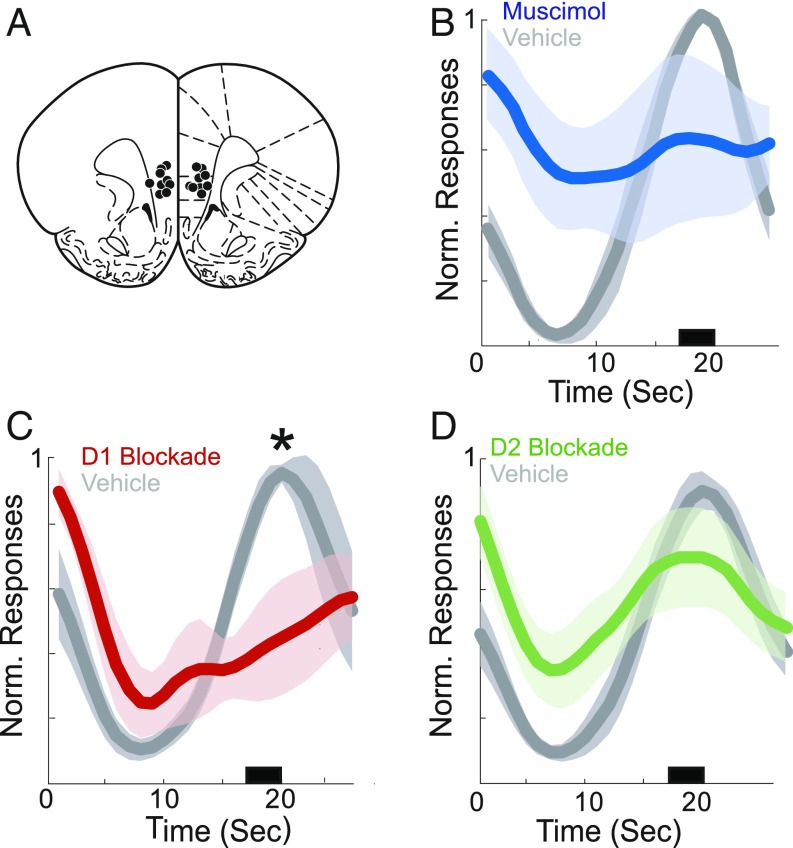NEUROSCIENCE Correction for “Prefrontal D1 dopamine signaling is required for temporal control,” by Nandakumar S. Narayanan, Benjamin B. Land, John E. Solder, Karl Deisseroth, and Ralph J. DiLeone, which was first published November 26, 2012; 10.1073/pnas.1211258109 (Proc Natl Acad Sci USA 109:20726–20731).
The authors note that, on page 20727, left column, first full paragraph, lines 5–8, the following sentence is incorrect and thus should be redacted: “Inactivation using muscimol (11) decreased responses anticipating interval end (Fig. 3B; P < 0.05) relative to control sessions, suggesting that prefrontal regions are necessary for temporal control during interval timing.” As a result, the asterisk in panel B of Fig. 3 should be removed. The corrected figure and its legend appear below.
Fig. 3.
Prefrontal dopamine disruption and temporal control. (A) Targeting for bilateral cannulas implanted in the prefrontal cortex. (B) Prefrontal inactivation with muscimol (blue, n = 5) significantly impairs responding. (C) D1 blockade using SCH23390 dramatically impairs temporal control (red, n = 6). (D) D2 receptor blockade using sulpiride (green, n = 9) does not significantly alter timing relative to controls. Shaded areas represent SEM. Small black bar indicates interval used to compare response histograms.



